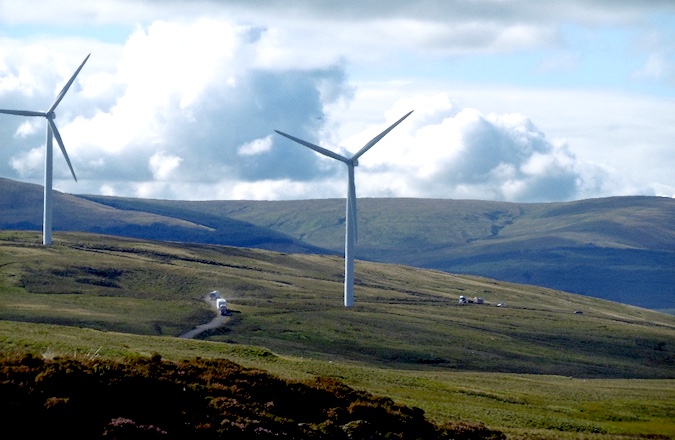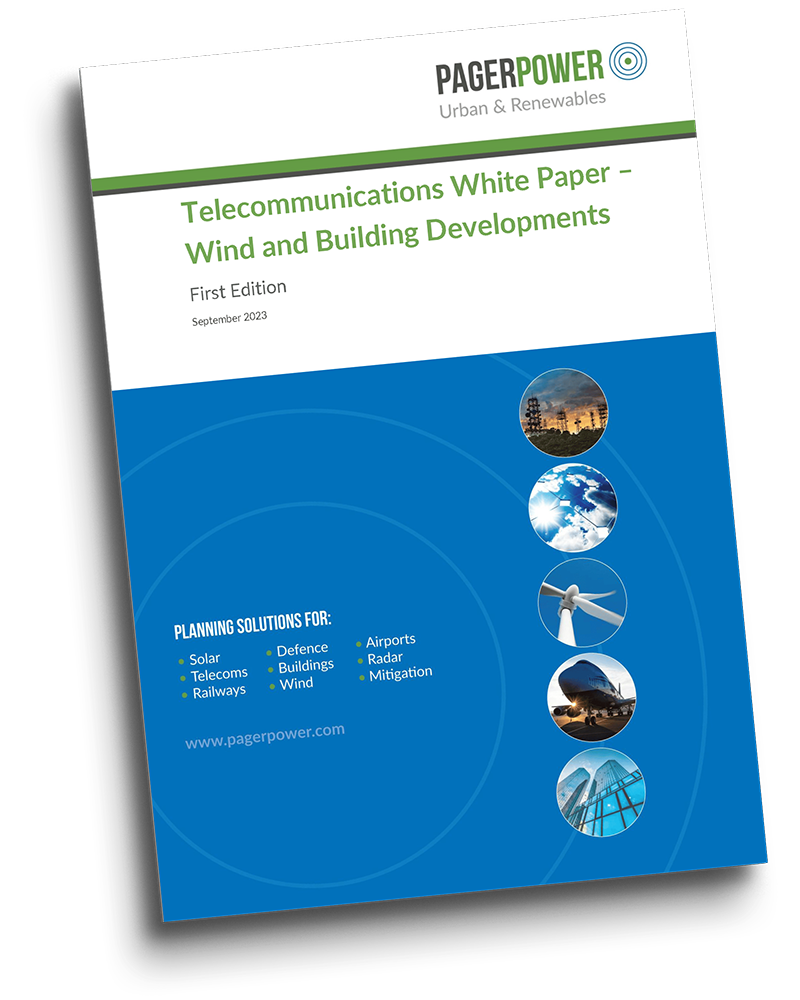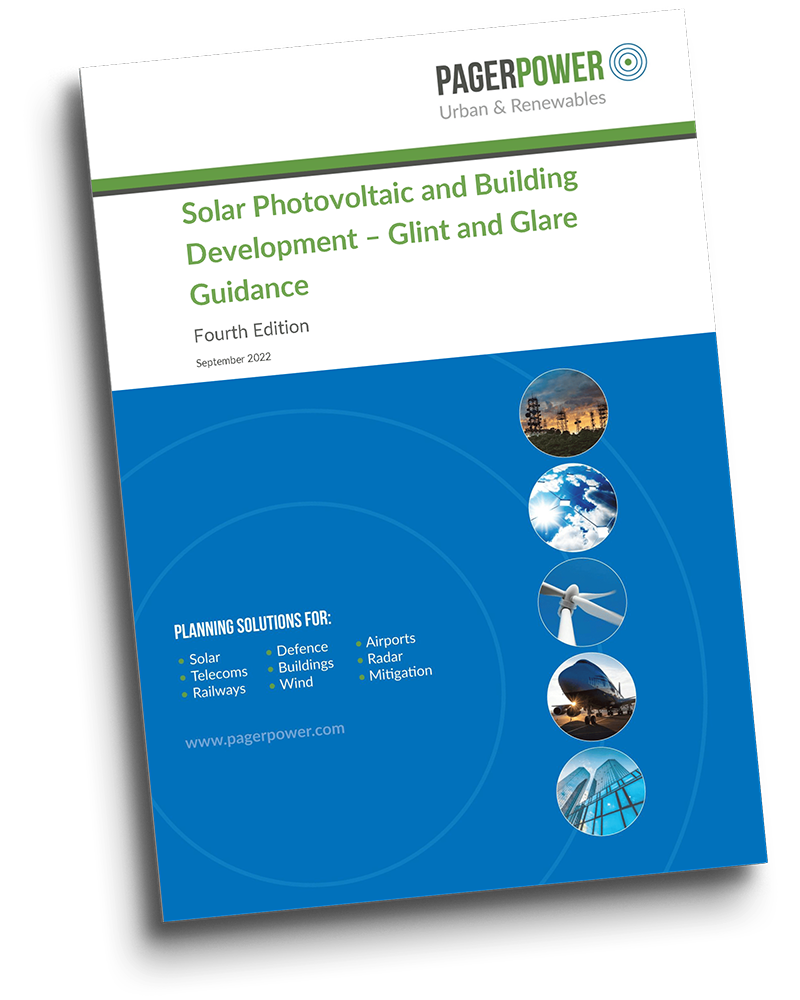OWTS Series, Part 1: Transparency and Civil Aviation

From 2015 to 2024, onshore wind development across England essentially ceased due to a de facto ban on all new onshore wind projects that did not have the approval of local stakeholders; however as of last year, this ban was lifted by the incumbent government. With the ban stretching back almost a decade, stagnation developed in the aviation and radar sectors across England because there was no need to solve long-standing issues that have always plagued wind development i.e. impacts to communications, navigation and surveillance (CNS) infrastructure and the safety of aviation operations. Whilst strictly not in England [1], mitigating the impacts upon the seismic array in southern Scotland (known as Eskdalemuir), was also put on the back burner. However with the focus now on moving towards Net Zero, and with big targets set for 2030, a renewed focus has been placed on England’s onshore wind sector, including Eskdalemuir, and therefore the UK Government has released the Onshore Wind Taskforce Strategy (OWTS) to help move the process forward.
The strategy covers numerous areas of onshore wind development, from enhancing planning efficiency to tackling public perception; however Pager Power’s focus is on the aviation and radar sectors. Part 1 in this series looks at how the strategy seeks to help resolve the issues surrounding transparency within aviation mitigation and the constraints around civil aviation radar. Lastly, as experts in this area, we will discuss how effective the strategy is likely to be, what it does well, and where it could go further.
 Figure 1: Onshore wind farm in the UK. [2]
Figure 1: Onshore wind farm in the UK. [2]
OWTS Overview
The OWTS is an 82-page document written by the Department for Energy Security and Net Zero, and was released on 4th July 2025. The authors specifically state:
The Onshore Wind Taskforce Strategy sets out over 40 actions, primarily government commitments, to resolve the key blockers to onshore wind in the UK. It aims to:
- boost onshore wind deployment
- deliver economic benefits for local communities, businesses and the consumer
The strategy is the main output from the Onshore Wind Taskforce, established in July 2024 in order to produce this strategy, now disbanded.
The OWTS covers the following themes:
- Theme 1 – Site Selection, preparation and consenting
- Theme 2 – Networks and system planning
- Theme 3 – Communities and public perception
- Theme 4 – Aviation and defence
- Theme 5 – Finance and routes to market
- Theme 6 – Supply chain, skills and workforce
Of these, aviation and defence cover seven pages within Theme 4.
Transparency Summary
One of the key issues that developers have identified as preventing the resolution of civil aviation objections is a ‘lack of transparency in decision-making’, which makes it difficult for developers to identify potential aviation constraints and know what the potential mitigation options would be.
The OWTS has also identified a lack of data surrounding the volume of onshore wind projects which are affected by planning objections relating to aviation and defence. The current prevalence of Non-Disclosure Agreements (NDAs) in radar mitigation also limits wider understanding of the causes and solutions to aviation objections.
On this basis, the OWTS has suggested the following actions:
- Action 22: The Government will commission an annual survey of onshore wind impacts on aviation and defence infrastructure.
- Action 23: The Government will develop best practice guidance on use of non-disclosure agreements (NDAs) when resolving aviation objections.
Civil Aviation Radar Summary
The impact of wind turbines on radar has been known for well over two decades, and this article will assume implicit knowledge of the reader regarding these impacts; however, for those requiring further information, please see the article here.
The primary concern identified within the OWTS for civil aviation radar is the cost of mitigation, as typically there are suitable mitigation options available for civil radar, but the costs may be a significant burden upon onshore wind developments. Currently there are insufficient incentives for civil aerodromes to upgrade their radar with wind farm-tolerant solutions, nor is it necessarily a key requirement of any tender process
On this basis, the OWTS has suggested the following actions:
- Action 26: The Government will explore creating a new post in the civil aviation authority with responsibility for providing neutral and objective advice for stakeholders and facilitating discussions to assist resolution of aviation safety concerns associated with proposed developments.
- Action 27: The Government will review and publish updated CAP764 guidance and consider whether additional best practice guidance is required to aid interpretation.
- Action 28: The Government will conduct a review of airspace regulations to consider options to require civil aerodromes to procure new primary surveillance radars that have wind farm mitigation capabilities.
- Action 29: The Government will explore the creation of a ‘mitigation fund’ to issue financial support to civil airports who require radar upgrades.
OWTS Critique
Transparency and Data
Transparency around aviation issues and solutions would clearly be very useful to enable both developers and aviation stakeholders to better understand the requirements for and availability of radar mitigation solutions, however the OWTS does not fully resolve these issues or contain any specific measures on this matter. Currently the actions serve to begin a process of better understanding the scale of aviation and defence issues and setting guidelines on transparency, but it will take time for these to be delivered, and it will likely require further measures in order to drive change within this area.
Neither of these proposed measures address incentives for aviation stakeholders to engage in timely and cooperative consultation or provide any further clarity to developers as to when mitigation is likely to be required and what form this may take.
Civil Aviation Radar
Appointing an individual within the CAA with responsibility for providing advice to stakeholders and facilitating discussions may be a positive step, but the success of this action is likely to be dependent on the profile and attitude of the individual who is appointed. It is necessary that whoever takes this role approaches it as a neutral third-party who can mediate discussions and drive solutions.
Similarly, an update to CAP764, which provides clearer guidelines, is likely to be welcomed by the industry, but it is difficult to assess whether this will provide any noticeable benefit without understanding exactly what will be added to the publication and how this may affect the process of identifying and mitigating radar interference. It is worth noting that this document was only just out for industry consultation last year.
The two actions which may have the greatest impact are those which address incentivising or requiring aerodromes to update their radar to wind farm tolerant models. This could have a large impact on smoothing the path of radar mitigation and reducing the high radar mitigation costs currently faced by developers. Many civil aerodromes do not have the current need or funds to invest in expensive wind farm-tolerant radar (or the incentives to do so), and therefore a central mitigation fund is an important component of mandating upgrades to existing radar equipment. There is currently no incentive for radar stakeholders to upgrade a perfectly functioning radar that suits its primary need of providing air traffic control services to aircraft. The key question that aerodromes and developers are likely to have is how this will be funded; there are different options, including mandatory contributions for all onshore developments regardless of the potential for interference or splitting the costs of mitigation amongst many projects, which could be mitigated through a single radar update. More clarity on the funding model is likely to provide greater certainty for the industry and incentivise investment.
Final Thoughts
Part 2 in this series will look at how the strategy seeks to help resolve the UK military’s ongoing radar problems and the constraints around developing near Eskdalemuir, an area that has been neglected for a number of years.
Speak to an Expert
If you are interested in finding out more about our expertise in wind planning support and how we can help you understand the aviation and radar issues that your project faces, click here.
To make an enquiry, give us a call on +44 (0)1787 319001, email our team directly or send an email to info@pagerpower.com .
About Pager Power
Pager Power is a dedicated technical consultancy that has been providing independent guidance and advice regarding wind, solar and building developments in the UK and internationally since 2002.
Further details about the services we provide can be found here. Pager Power has completed over 1,600 glint and glare assessments, over 1,000 aviation/radar impact assessments, over 500 television and radio reception surveys, and over 500 telecommunications impact assessments.
Finally, a link to our testimonials page can be found here.
References
[1] The seismic array’s consultation area is a 50km radius, centred on the array. This area extends into England.[2] Earlsburn Wind Farm, (September 2015) from wikimedia commons. Last accessed on 15th July 2025. Available at: https://commons.wikimedia.org/wiki/File:Earlsburn_Wind_Farm_-_geograph.org.uk_-_4838896.jpghttps://www.pagerpower.com/wp-content/uploads/2025/07/OWTS-part-1-thumbnail-.jpeg







